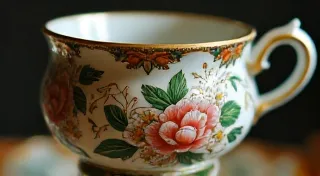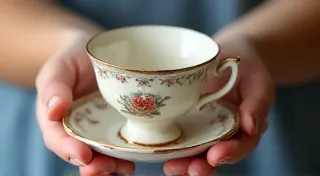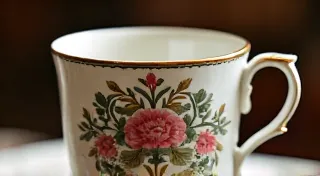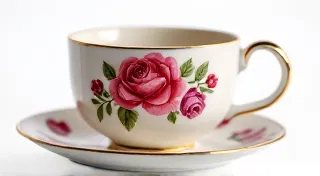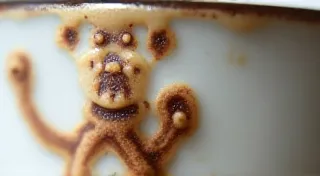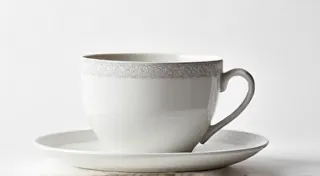The Influence of Victorian Era Styles on Tea Cup Design
The Victorian era (roughly 1837-1901) was a period of immense social and industrial change, and its impact on decorative arts, including tea cups, is undeniable. A fascination with ornate details, romantic symbolism, and intricate craftsmanship led to a distinct aesthetic that remains highly sought-after by collectors today. Understanding the Victorian influence is key to appreciating and identifying antique tea cups.
A Shift in Taste: From Regency to Victorian
Prior to the Victorian era, Regency styles favored simpler, more classical designs. However, Queen Victoria’s reign ushered in a desire for opulence and sentimentality. The Great Exhibition of 1851, showcasing innovations and craftsmanship from around the world, further fueled this trend. Manufacturers responded by creating tea cups that reflected this evolving taste, focusing on increased detail and richness.
Popular Motifs and Themes
Victorian tea cups are renowned for their distinctive motifs. Several key themes repeatedly appear in designs:
- Floral Motifs: Roses, violets, lilies, and forget-me-nots were exceptionally popular. Each flower carried a symbolic meaning; roses often represented love and beauty, while forget-me-nots signified remembrance.
- Bird Imagery: Robins, goldfinches, and other songbirds were frequently depicted, often nestled amongst floral arrangements. These motifs added a touch of natural beauty and charm.
- Landscape Scenes: Pastoral scenes, often inspired by idyllic countryside views, were a common feature, particularly on larger tea cup sets.
- Figural Decoration: While less common than floral and bird designs, figural decoration could include portraits of royalty, historical figures, or romantic couples.
- Romantic and Sentimental Imagery: Heart shapes, doves, and cherubs were utilized to express romantic sentiments, reflecting the Victorian obsession with sentimentality.
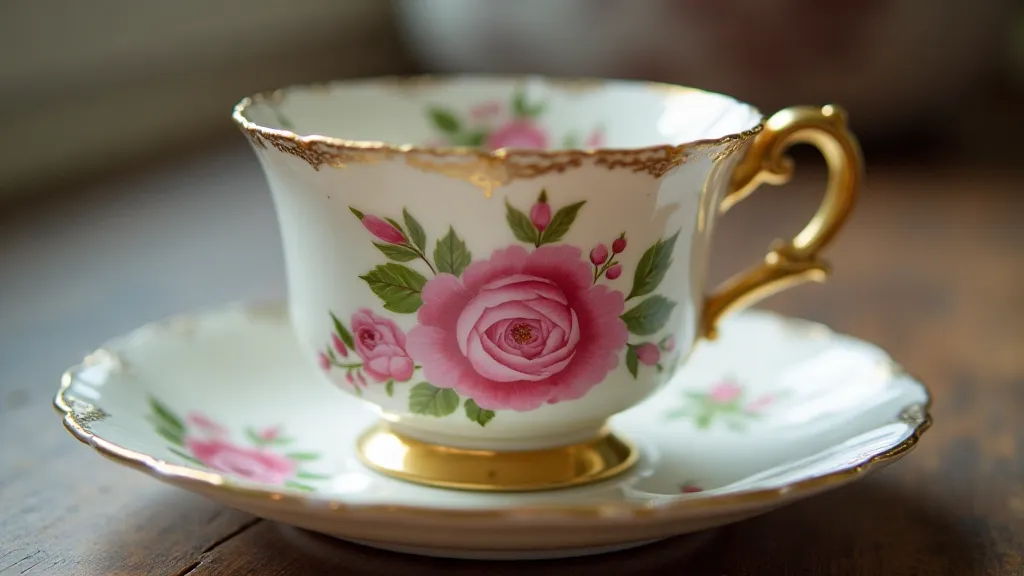
Craftsmanship and Decoration Techniques
The Victorian era saw significant advancements in ceramic manufacturing techniques, allowing for increasingly elaborate designs. Key techniques employed in the decoration of antique tea cups include:
- Hand-Painting: Highly skilled artisans painstakingly hand-painted intricate designs onto the porcelain surface. Variations in the painting are common and a sign of authentic hand-painted work.
- Transfer Printing: This more efficient method involved transferring a pre-printed design onto the porcelain. While less valuable than hand-painted pieces, transfer-printed tea cups are still collectable and often feature complex patterns.
- Gilding: The application of gold leaf, or a gold-colored pigment, provided a touch of luxury and elegance. Gilding was often used to highlight floral details or rim edges.
- Enameling: Applying layers of colored glass to the surface of the porcelain created a lustrous, vibrant finish.
- Mislustration: Subtle imperfections, like slight variations in the painted design, are common in hand-painted Victorian tea cups and are often considered charming rather than flaws.
Identifying Victorian Tea Cups
Several factors can help identify a tea cup as Victorian:
- Markings: Look for manufacturer’s marks on the base of the cup. While some markings are clear, others may be faded or difficult to decipher. Researching manufacturer's marks is a vital skill for collectors.
- Style: The presence of the motifs and decorative techniques described above is a strong indicator.
- Quality of Craftsmanship: Authentic Victorian tea cups, particularly those hand-painted, exhibit a high level of craftsmanship.
- Shape and Size: Victorian tea cups often feature a more rounded shape compared to earlier styles.
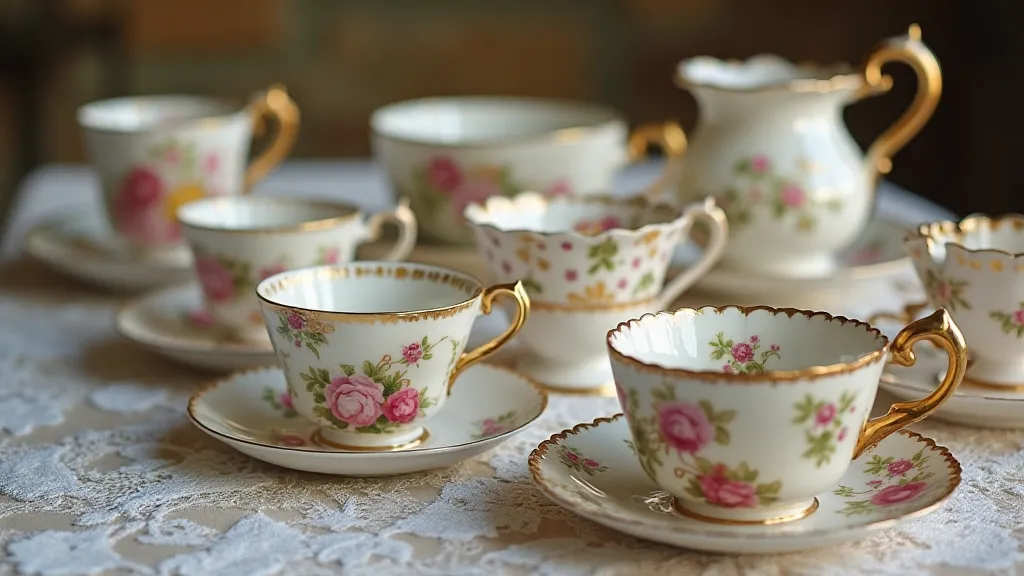
Popular Manufacturers
Several manufacturers were renowned for producing exquisite Victorian tea cups. Some notable examples include:
- Minton: Known for their innovative designs and exceptional craftsmanship.
- Wedgwood: Famous for their jasperware and elegant china.
- Royal Doulton: A prolific manufacturer of various china patterns, many of which are highly collectible.
- Shelley: Known for their delicate bone china and beautiful floral designs.
- Coalport: Producing fine porcelain for over two centuries, known for its richly decorated pieces.
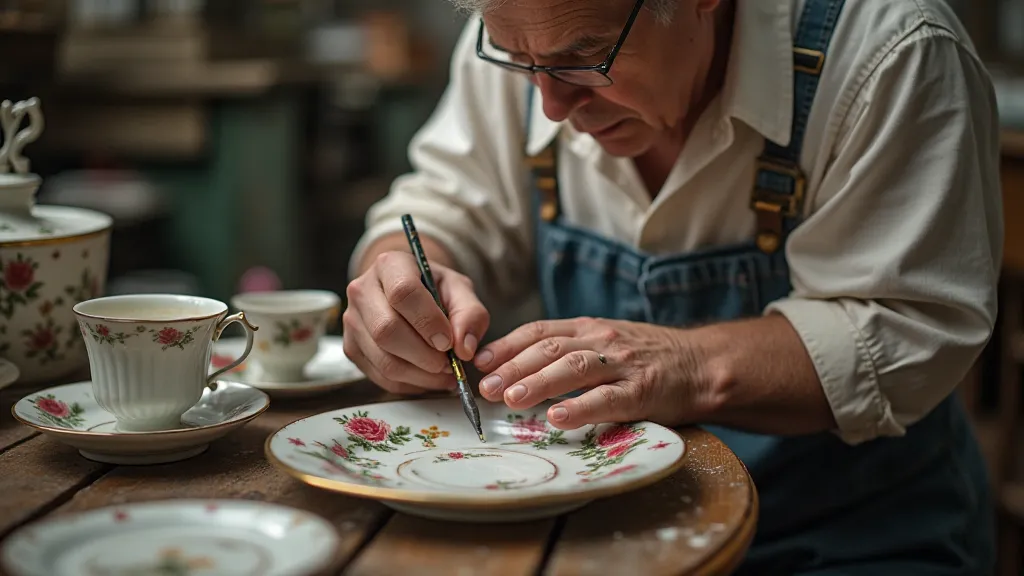
Conclusion
The Victorian era left an indelible mark on tea cup design. By understanding the key stylistic elements, manufacturing techniques, and popular manufacturers, collectors can better appreciate and identify these beautiful and historically significant pieces. The ornate details and romantic imagery of Victorian tea cups continue to enchant and inspire today.
